In October, Richard Bourke (Cambridge) and Dina Gusejnova (LSE) released the film Rosenöl und Deutscher Geist: The Fortunes of German Intellectual History, an exploration of German intellectual history from the 19th century to the present. Contributing editor Jonas Knatz and editor Anne Schult spoke with Bourke and Gusejnova about documenting intellectual history in film, the “tragic plot” of 20th-century German intellectual history, and its legacies within and beyond contemporary German academia.
Jonas Knatz & Anne Schult: Your film presents a metahistory of the German history of ideas. Choosing to do this project as a documentary film rather than a book or special issue brings up interesting questions about the medium of intellectual history. Why did you decide to turn to a format that has both audio and visual components? And what does German intellectual history sound and look like?
Dina Gusejnova: Before this project, Richard had planned a workshop on the history of intellectual history, and some of the ideas behind the film had been originally intended as a contribution to this workshop in the form of a more conventional paper. I wanted to look at the history of a certain way of studying intellectual currents which emerged out of German academic traditions. Unfortunately, or perhaps fortunately, in retrospect, the conference for which this paper had been intended did not take place. But by this point, we had started a protracted conversation on these topics, during which the idea materialised to conduct a series of interviews.
Since we knew we were going to have at least ten different speakers, it became clear that film was a more appropriate medium. Generally, the film format enables the viewer to follow one long conversation with multiple participants without losing the plot, and to provide a minimal sense of location for otherwise rather abstract conversations. Early in the process, I was successful in getting funding from the ZEIT-Stiftung. Looking for the appropriate format for the idea, we drew on a combination of experiences with radio, film, and education podcasting, such as BBC Radio 4 or new public science platforms such as Postnauka and Serious Science. At one point, it transpired that we had also both watched the Harry Kreisler series for UC Berkeley, “Conversations with History.” Most recently, Frederick Baker in cooperation with the Austrian Academy of Sciences and two historians, Johannes Feichtinger and Heidemarie Uhl, directed a film called “Exile and Excellence,” about the scholars expelled from Austria after 1938 and their influence in various fields, focusing on the Natural Sciences and Literature. All these examples were useful in thinking about the right format for this project.
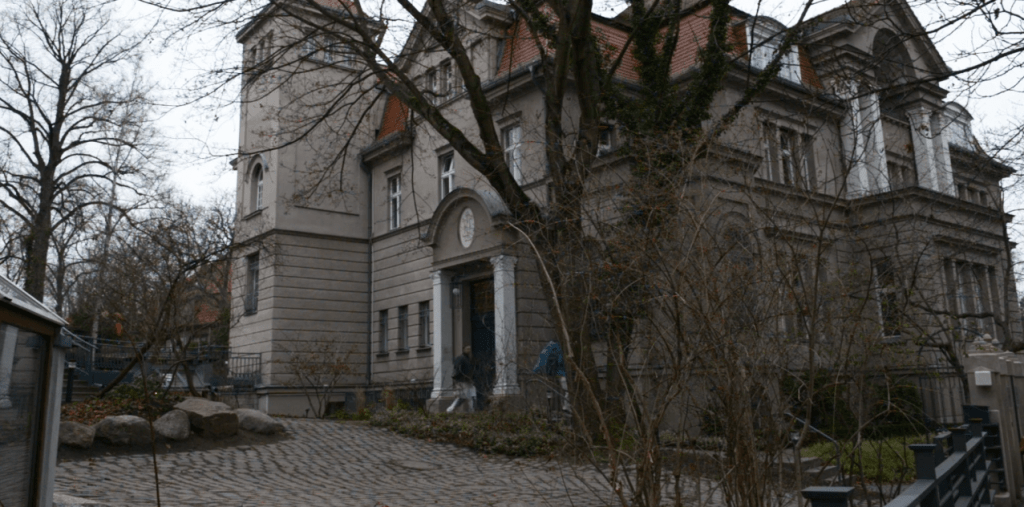
Hayden White’s term “metahistory” has some validity here insofar as there is an element of “tragedy” in the emplotment of part of the story, and also an element of contextualism in the approach. We were trying to make use of the medium’s capacity for counterpoint. Images and music do not just reinforce the spoken word but can also be used to express doubts or contradictions, at least for those viewers who are willing to engage with it on this level. The particular images we used convey the “tragic” dimension of the plot line, while the music captures more of the question marks and the ambiguities. The look of the film was largely the work of our producer and director of photography, Olga Lagun. It was her idea to start exploring the surroundings of the Wissenschaftskolleg zu Berlin (WIKO) in detail, and the result was this evocative set of nearly still images of various dying plants, together with some shots of the bürgerliche atmosphere of the WIKO’s dark-paneled interiors in which we arranged some literature relevant to the subject. If you know the history of the building and its surroundings, you have an additional story to go by in thinking about the peculiar setting of the conversations. The building is itself a witness of the history we are recovering.
The main villa in Wallotstraße in Berlin-Grunewald, where most of the filming took place, had passed from private wealth of the emergent upper-middle class elite of the late Wilhelmine empire to Hermann Göring’s community defence organisation against air raids, to the British occupation forces, which used it as an officer’s mess, before being taken over by the Berlin Senate and then finally used as a School of Advanced Study. Some filming takes place at the nearby “Gleis 17” memorial to the deportation of the Jews from Berlin, which in my view is still by far the most powerful Holocaust memorial.
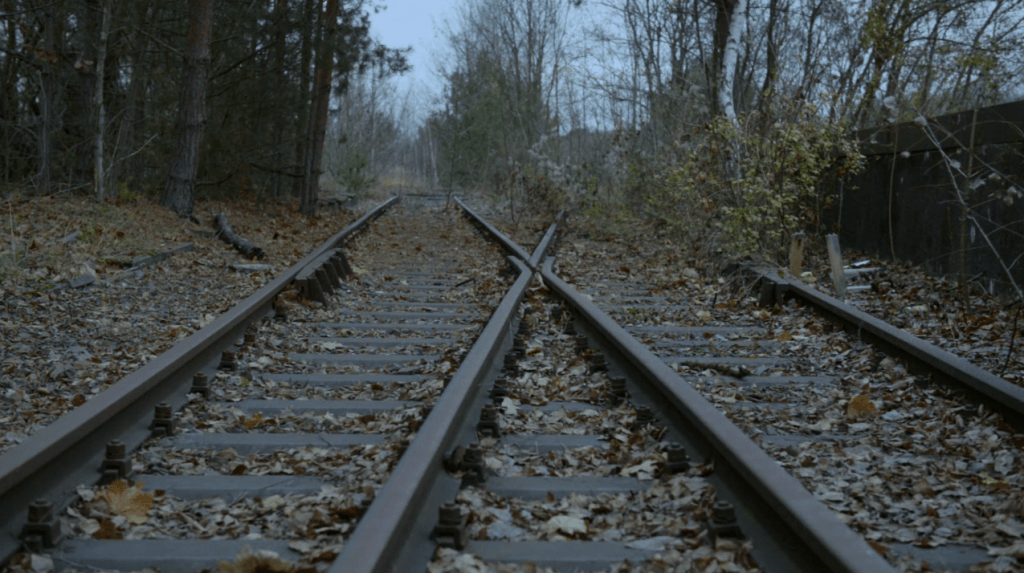
Taken together, these visual materials can be used as a critical commentary to Meinecke’s characteristically idealist statement from 1924, in which he argued that “[t]he ideology of a major thinker, generated by the experiences of their time, is like the essence distilled from hundreds of roses.”[1] The images of dried rosebushes on a particularly dreary December day in Grunewald are not an illustration of the quote but perhaps more a hint at what happened to Friedrich Meinecke’s students, many of whom were Jewish and/or social democrats and were either forced into exile in the US and elsewhere, like Felix Gilbert, or died in Nazi-occupied Europe, like Hedwig Hintze, who most likely committed suicide in 1942. I think the film people call these types of secondary images “B-rolls”—they can be used to connect themes but also to contradict, to offer the viewer a space and location for their own thinking. In short, the idea here is that the visual background locates the conversation more or less in one space (though locations have also included Queen Mary University of London and LSE), rather than changing locations every time the story changes as well in a way that a conventional documentary might have done. Just as the camera switches between Gleis 17 and the Villa, the viewer can choose to focus on 1933-45 or “now” as the story’s main vanishing point, depending on their preference.
The tragic plot line conveyed in the B-rolls is therefore a question mark as much as an answer. In fact, I would argue that it is not clear in the light of the conversations whether the tragic story line really prevails at all. At the very least, the more tragic opening provokes the viewer to assess the present, which is why Eva Marlene Hausteiner’s discussion of democracy today prompts the camera to return to these railway images, but this time, focusing on the present-day tourists visiting the site rather than the history of the deportations etc.

To evoke a greater sense of doubt concerning the direction of the story was mostly the job of the music. I wanted to find music by a composer coming from the same milieux as our various thinkers, but the question was how to find something which is suitable to the longer-term story. I was torn between a particular piece by Mendelssohn and something by Bach, and in the end settled for the most and the least characteristic of Bach’s works. The most canonical piece—in both senses, forgive the pun—is the “Thema Regium,” the King’s Theme from the Musical Offering, which was Bach’s interpretation of a theme composed by Frederick II of Prussia himself [BWV 1079]. Dan Tidhar, a harpsichordist based in Cambridge, who was preparing a set of concerts and talks on Bach around the time we were making the film, was kind enough to record it for us in a way that sounds more improvised, so that we could extract elements of both pieces to be used in distinct parts of the film. The royal theme offers a hint of connection from the early story of Prussia as conveyed by Chris Clark to the world of Princeton where, in our story, Quentin Skinner met Kurt Goedel, the logician whose intellectual preoccupations have been so closely linked to Bach’s, at least in Douglas Hofstadter’s classic book.
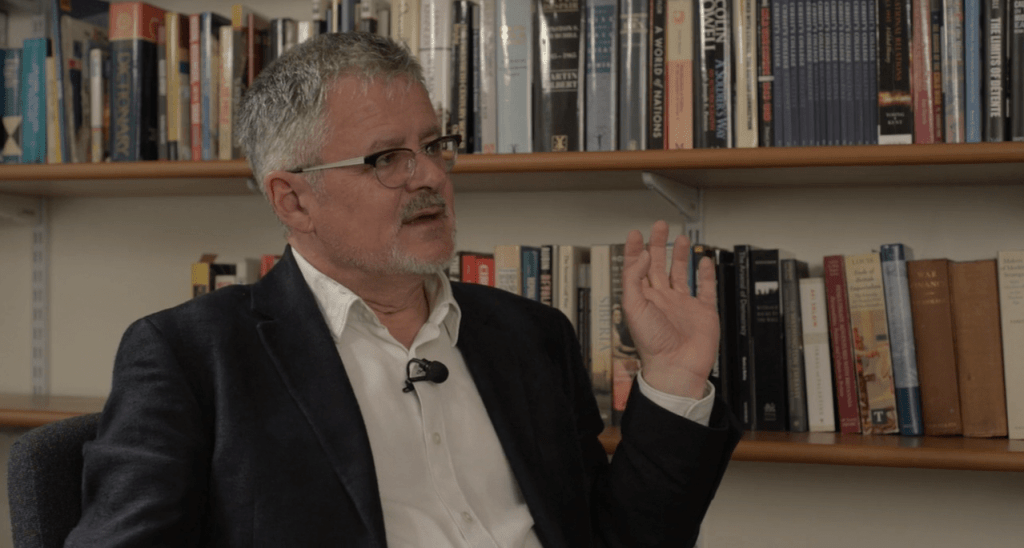
The other piece that you hear is one of Bach’s Goldberg Variations (BWV 988), number 25. It is famous precisely because it sounds so uncharacteristic of its period, or, indeed of most of the 30 variation cycle. It could easily be identified as Romantic, with its heavy use of chromatic and almost discordant sound. This anachronistic character comes out even more strongly if performed at a much slower pace and on its original instrument, like Dan Tidhar does. Again, a side story if you know it is the name this variation subsequently acquired, the “Black Pearl,” coined by the great Polish Jewish harpsichordist Wanda Landowska, a star in her day who taught in Berlin around the time of the First World War and later emigrated to France and the United States, and whose performances of Bach have been sadly superseded by the global marketing of Glenn Gould. In my view, there is a certain relentlessness to the progression of musical ideas in all Bach variations which underlines a different line of our story as well—that Meinecke’s proverbial essences, or musical ideas such as Bach’s, can be developed in new places and even in the absence of those intellectual communities who had originally generated them.
All in all, using the medium of film enabled us, I hope, to tell a multi-perspectival history, a conversational setting in which viewers can find a space for their own thoughts which may well disagree with what they see or hear. At the same time, I should add that no medium is in itself a solution to an intellectual problem, so if you are not convinced by the story the film ends up telling, don’t blame it on the medium.
JK & AS: Throughout the 19th and early 20th century, German scholarship proved extraordinarily influential across a range of sciences beyond the country’s borders. In conversations with a group of contemporary scholars from the US, the UK, and Germany, your film argues that, by contrast, its influence declined significantly from the 1920s onward. In 1924, Friedrich Meinecke memorably still likened major intellectual works to “the essence distilled from hundreds of roses” in his Die Idee der Staatsräson in der neueren Geschichte—but what happened to the titular “fortunes” of German intellectual history after?
Richard Bourke: German intellectual life in the broadest sense exercised a tremendous influence across Europe and throughout the Anglophone world from the era of Kant down to the 20th century and beyond. Our concern was with a specific domain of the historical sciences. We were interested in the historicist sensibility that has pervaded the humanities and social sciences in Germany since Herder, and the way in which this sensibility gave rise to a preoccupation with the history of ideas. This preoccupation is variously apparent in Hegel, Dilthey, and Nietzsche considered as thinkers generally, but it constituted a professional focus for Friedrich Meinecke as an academic historian. Our film was not primarily concerned with the history of ideas in Germany as such, but with the fate of intellectual history within the historical profession. Meinecke was never the pivot of German intellectual life, but he was a central figure in the career of German historiography. As such, he represents a high-point for the discipline of intellectual history as the leading international practitioner in the first third of the 20th century.
We asked interviewees where they thought the sources of German intellectual history before Meinecke lay, and in their answers they took us back through the worlds of Ideengeschichte, Geistesgeschichte, and Sozialwissenschaft to the German historical school of law and its great rival Hegel, and finally to the history of biblical scholarship, whose practitioners developed a keen sense of the historical relativity of the Christian and Jewish faiths as expressed in their official documents of revelation. The suggestion is not that all this “culminates” in Meinecke, but that Meinecke studied and channeled many of these influences and put them at the disposal of the historical profession in the form of intellectual history.
Meinecke did not deliver the answer to all our questions as historians—far from it—but he did represent a formidable example of an academic historian who drew on Germany’s vast philosophical traditions in building the discipline of intellectual history. Other highly distinctive figures across the same period likewise were consciously steeped in these traditions—Heidegger, Simmel, Schmitt, Cassirer, Arendt, and Adorno are just some examples. Yet clearly none of these thinkers were professional historians.
The question naturally emerges: who succeeded Meinecke in the project of intellectual history after WWII in Germany? A great many of his students were victims of the rise of National Socialism, and accordingly emigrated. So who assumed his mantle in the land of his birth? It is hard to find a comparable figure after the 1950s. Which German historian since can boast an equivalent command of the German philosophical tradition? Reinhart Koselleck, although he lacked any connection to Meinecke, stands alone among postwar German historians as one steeped in the full range of philosophical and historiographical traditions spawned by German idealism. Who else might even notice or care that the aspiration to such a facility disappeared inside the historical profession? Karl Mannheim proved influential for a time in trying to develop a historical sociology of knowledge, yet by the 1970s his approach had largely been collapsed into the study of classes (or professions) and their attendant intellectual “interests.”
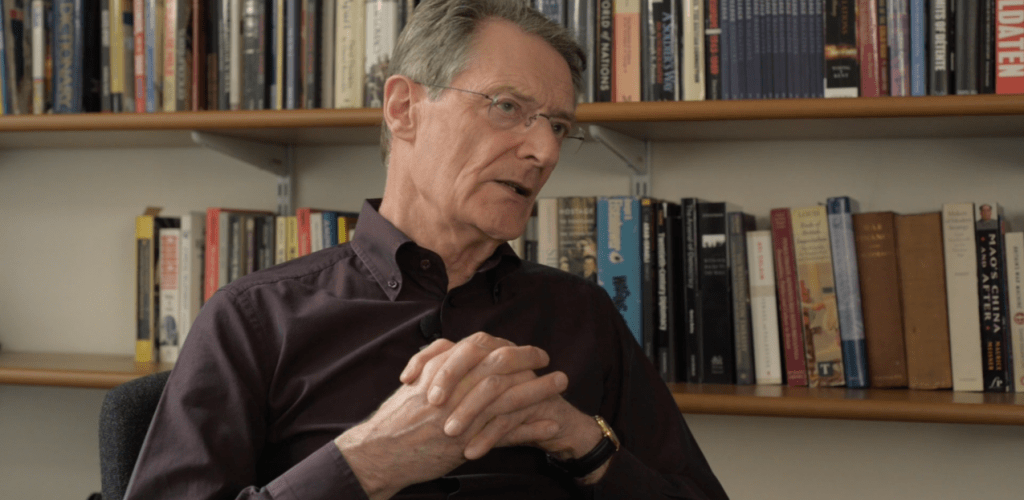
The story of relative decline is not exclusive to Germany. Paul Veyne, Gerald Stourzh, J.G.A. Pocock, Quentin Skinner, Anthony Grafton, Natalie Zemon Davis, Richard Tuck, and Lorraine Daston present examples of historians immersed in wider learning, and naturally there are major intellectual figures among younger historians. However, in general, professionalization has come at the cost of a certain narrowing of the craft. It followed the reduction in competence across disciplines in the era of putative inter-disciplinarity. The point is: there are perhaps fewer exceptions to this trend in Germany than one might hope. Individual outstanding figures like Wolfgang Mommsen and Ernst Nolte kept the diverse traditions of German Geistesgeschichte alive, but in general its achievements came to be shunned. First the history of ideas was variously associated with nationalism, historicism, and teleology; later it was identified with epiphenomenalism, obscurantism, and elitism. Karl Popper was an influence in the early stages of disavowal, with the forces of 1968 becoming decisive subsequently. More recently, German academics have tended to follow American trends. Where once they set the terms of US intellectual debate, today they are often consumers of the results reflected back at them having been refashioned and repackaged across the Atlantic.
DG: The topic of our film encapsulates a narrative challenge because the subject of the story changes with every period being covered. Then again, you might object that this is probably a problem that any study of a longer intellectual tradition will face. The focus of the canvas story is on the waning of the Meinecke galaxy within the discipline of History in Germany and its re-emergence in Anglophone contexts, but this has to be put in relation to the wider intellectual world in the long 20th century. In this wider world, it is difficult to delineate the boundaries of History in relation to fields such as Philosophy, Politics, orCritical Theory. If one broadens the perspective to include these fields and departments, there are a range of German stars and planets that continue to emit influence, some of which are rediscovered after 1945.
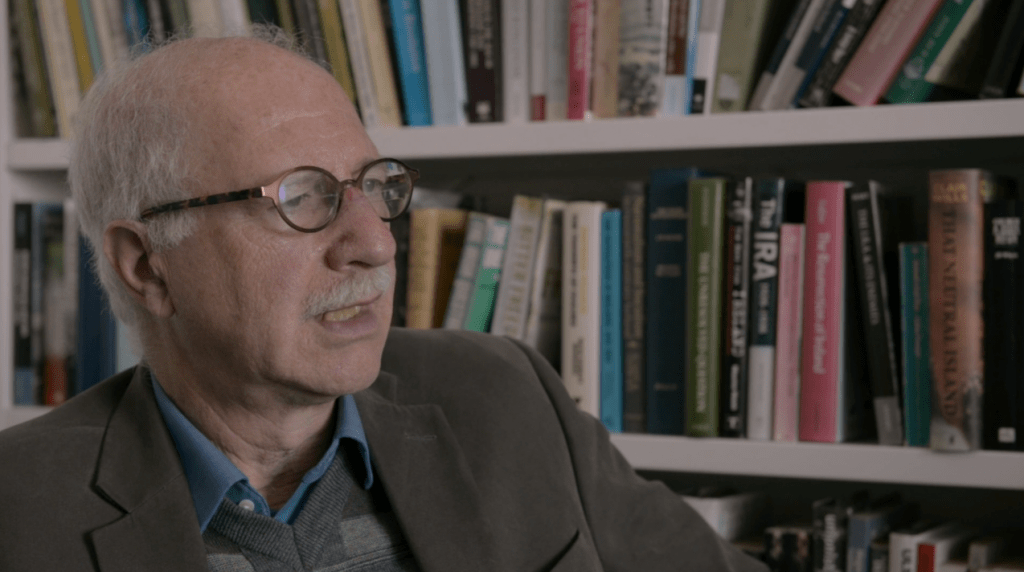
In his critical comments after seeing the film, Martin Jay asked: “Where were the Dadaists, Brecht, Mann, etc. in the story? The ignoring of Critical Theory, which developed alongside rather than at the heart of the mandarin tradition, speaks to this lack.” We could not agree more with the validity of this statement—and yet, when it comes to the discipline of History as practiced in Germany after 1945, all we can do is throw the ball back. Indeed, where is the influence of these figures on German historical thought—note, not historical writing on Germany—since the 1960s? It is clear—and this is of course why we invited Martin Jay himself to speak—that in and through scholarship such as his own and that of many of his students, Critical Theory continues to have a lasting influence on the discipline of History and the work of intellectual historians currently working in this field in US academia. I will only mention Sam Moyn here, who, in fact, kindly agreed to moderate the recent film discussion organised by the Council for European Studies, or the work of various intellectual historians represented in volumes edited by Peter Gordon and John McCormick under the title Weimar Thought (2017), or by Warren Breckman, Sam Moyn, Peter Gordon, Dirk Moses and Elliot Neaman, The Modernist Imagination (2009), which explicitly draws out the influence of Martin Jay on innovative work in the humanities more broadly that is inspired by Critical Theory. Separately from this trajectory, Raymond Geuss’s work has also pushed against the anti-historical strand of political thinking on both sides of the Atlantic, particularly in political theory.
But in Germany, of all places, institutions such as the Frankfurt Institute for Social Research have always focused more on Social and Political Theory and normative questions than on History. Yes, Horkheimer and Adorno’s Dialectic of Enlightenment, and, nearly twenty years later, Marcuse’s One-Dimensional Man, were cult reading in Germany, too. There are influential German historians of the Frankfurt School, such as Rolf Wiggershaus. There are also historians and social theorists who have engaged closely with the legacies of Critical Theory, such as Gisela Bock and Rahel Jaeggi. There is the reception among Germanisten, many of whom work at the juncture between academia and establishment media. But this is very different from saying that Critical Theory has influenced German historians in their craft, or pushed social or political theorists to be more historical in their thinking.
In Britain, things look different again. To continue the galaxy metaphor, the figure of Meinecke himself may be fading from view, but some of his students gain much more visibility in places like Princeton and pass on their ideas to others. If you take Quentin Skinner’s reflections on his engagement with Felix Gilbert’s work and the presence of the German and Austrian exiles in Princeton further, you could even see previously hidden connections between the way the Meinecke galaxy had worked at the interstices of philosophy and history before 1945, and the way Skinner himself subsequently developed the intellectual field that he shaped in so many ways from the early 1970s—even though his own account of the major influences on his ideas stresses the predominance of figures such as Collingwood. So you might argue that one of the fortunes of German intellectual history was that it became intellectual history as such—very much in the spirit of most of Meinecke’s own students, in fact, many of whom were not working on Germany at all.
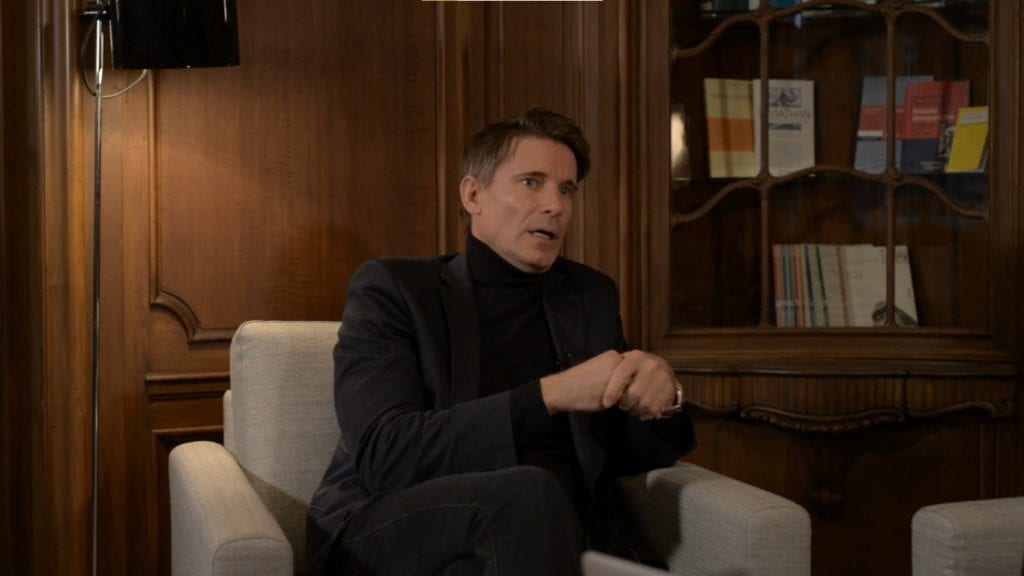
Finally, our questions pushed the interviewees to discuss Ideengeschichte in Meinecke’s sense as a core subject of the story, which transpires from the way we addressed our questions, and which is well known from works such as Fritz Ringer’s The Decline of the German Mandarins (1969). But it is fair to say that many of our interviewees in fact either disagreed with different elements of this premise or engaged with it critically. Martin Ruehl makes it especially clear that the periodisation is problematic—the idea of a decline around 1933 is self-serving to a liberal imagination of the field which is, in fact, more politically diverse. Even after 1945, there are some limits to the story of decline. He mentions people like Hermann Lübbe, Lothar Gall, Ernst Schulin, and even Wolfgang Mommsen as key historians who continue the traditions of both Geistesgeschichte and Ideengeschichte in Germany. Similarly, Eva Marlene Hausteiner suggests that preoccupations with intellectual history do continue after 1945, even though they are institutionalised in different departments, particularly in Political Science, rather than in History. Martin Jay finds that the Prussian Mandarin is too much at the centre of our story, and that the latter should in fact be broader. If one does expand and include the Austrian intellectuals, for instance, the framing would have to change—particularly when it comes to the influence of Austrian intellectuals on economic thought. But this again transcends the boundaries of History and its immediate subfields.
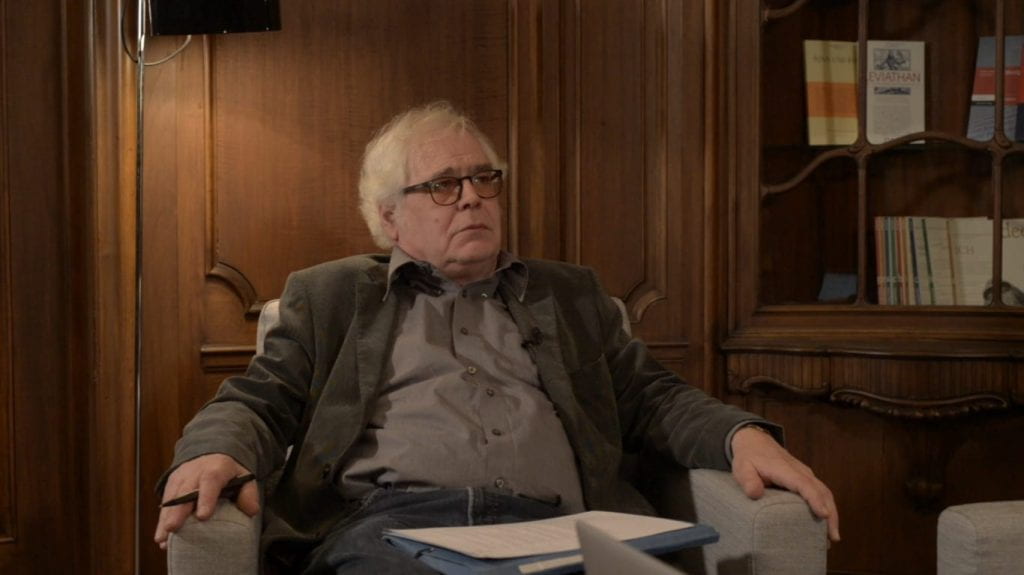
Wilfried Nippel argues that the Meinecke galaxy with its preoccupation with historicism had already been an isolated phenomenon in German and Austrian intellectual life before the rise of the Nazis. He argued that most sciences had already “dehistoricised” themselves as early as the 1920s, with Schmoller being supplanted by the more theoretically oriented Vienna School etc. We use the term “fortune,” but fortune telling is a business of reading minds more than hands. In other words: even when read backwards, the fortunes of German intellectual histories appear different to different people.
JK & AS: While the story of your film covers the entire length of the 20th century, the rise to power of National Socialism naturally marks a big incision in the narrative. As you put it in the film, Dina, “the entire range of sciences had become compromised by the Nazi project” [3:47] by 1945. Yet, as some of your interviewees point out, German intellectual history was not simply rejected by the Nazi regime. In what ways did National Socialism co-opt methods and approaches from Geistesgeschichte?
DG: This is another aspect where the “tragic” emplotment only works if you believe that intellectuals persecuted by the Nazis and the intellectual traditions they represent are mutually constitutive. The truth is more disturbing if your expectation is that history will establish some sort of justice. In our film, Martin Ruehl tells this element of the story, and it is another moment which could sound quite shocking to someone who wanted to follow the “decline” canvas narrative uncritically. Perhaps some of us would like to hear that both Ideengeschichte and Geistesgeschichte simply die out when Jewish or dissident intellectuals are murdered or expelled. But what happened is more complicated.
What disappears from Germany is, of course, any cosmopolitan sense of Geist in the way that more liberal readers of Burckhardt, such as Ernst Cassirer, interpreted it before they were forced out of Germany. But, as Martin Ruehl indicates, some of the leading Nazi ideologues were actually engrossed in their own ways of doing intellectual history. His particular example is Volk im Werden [People in the Making], the journal edited by Ernst Krieck and Alfred Baeumler, which as the intellectual face of “Blut und Boden” was preoccupied with recovering various Germanic aspects in broader European cultural and intellectual histories.
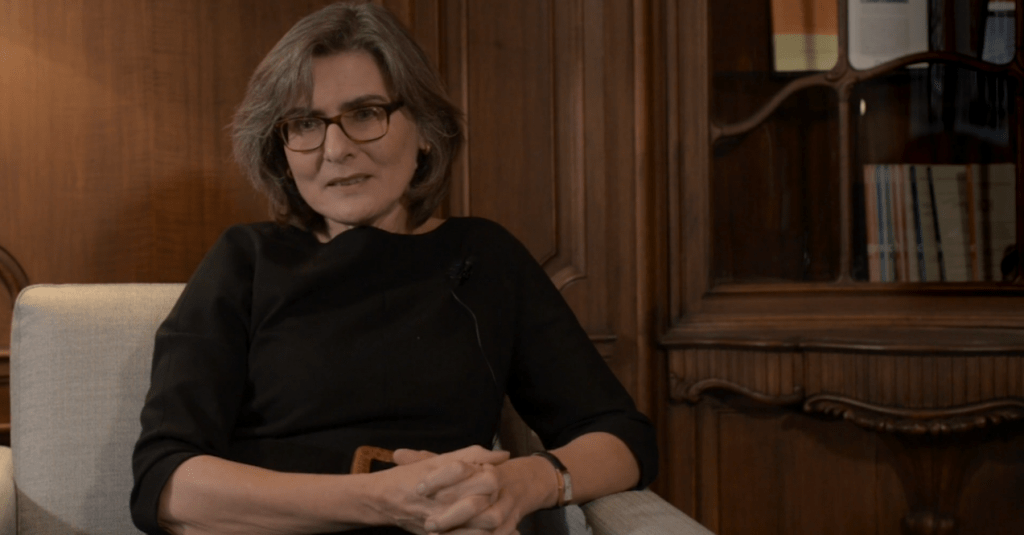
Barbara Stollberg-Rilinger also touches on the elements of continuity linking intellectuals who worked for Koselleck’s Geschichtliche Grundbegriffe, such as Otto Brunner, and the approaches to what might be called “intellectual area studies” under National Socialism. There is also Carl Schmitt’s influence on Koselleck to reckon with, as an element of continuity. Schmitt’s thinking about space as a category of intellectual history, among others, is undoubtedly an aspect of an intellectual tradition of Geistesgeschichte which flourished under the Nazi regime, as did the impulse of Nazi ideologues to transcend traditional academic institutions by founding new “interdisciplinary” ventures designed to promote particular Nazi policies through dedicated research agendas, among which there was also room for a certain kind of intellectual history. Raymond Geuss likes to remind people, perhaps in a quip to narratives such as Peter Gordon’s Continental Divide, how many Neo-Kantians became ardent Nazis. We would all like to have a genealogy that establishes a morally uncompromised lineage for particular intellectual traditions, but I tend to agree that there is no such pure strand, and that there may be no turning point at which supposedly promising strands of inquiry fell from grace. In this sense, I am personally quite partial to tragic plots, because the whole tradition of tragedy guards against a certain kind of essentialism of believing in the redeeming purity of character, even if that character happens to be the protagonist of your particular story.
***
This is the first installment of a two-part interview with Richard Bourke and Dina Gusejnova. For the second installment, see here.
[1] “By converting experience into thought, human beings free themselves from the weight of that experience, and release new capacities that can refashion life.” [Friedrich Meinecke, Reason of State in Modern History (1924)] // “Die Ideologie eines bedeutenden Denkers, erwachsen aus den Erlebnissen seiner Zeit, ist wie der Tropfen Rosenöl, der aus Hunderten von Rosen gewonnen wird. Durch Verwandlung des Erlebten in Ideen erlöst sich der Mensch vom Drucke des Erlebten und schafft die neuen Kräfte, die das Leben gestalten.” [Friedrich Meinecke, Die Idee der Staatsräson in der Neueren Geschichte (1924)]
Richard Bourke is Professor of the History of Political Thought at the University of Cambridge. He has published widely in enlightenment and post-enlightenment intellectual history and political theory.
Dina Gusejnova is Assistant Professor in Modern European History at the LSE. She has published on German intellectual history and political thought in European and global contexts.
Jonas Knatz is a PhD Student in New York University’s History Department. He works on 20th-century European intellectual history.
Anne Schult is a PhD Candidate in New York University’s History Department. Her current research focuses on the intersection of migration, law, and demography in 20th-century Europe.
Featured Image: Close-up of the Gleis 17 memorial in Berlin-Grunewald. Unless noted otherwise, all images are stills from the documentary.



